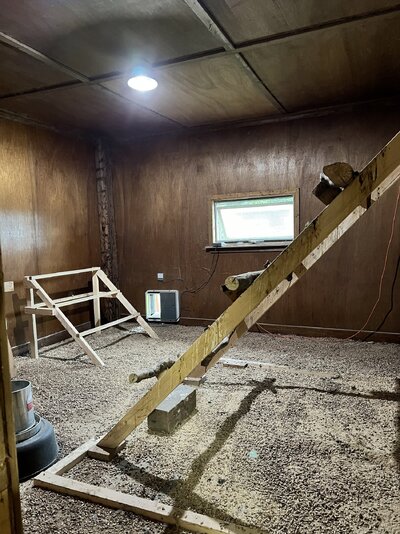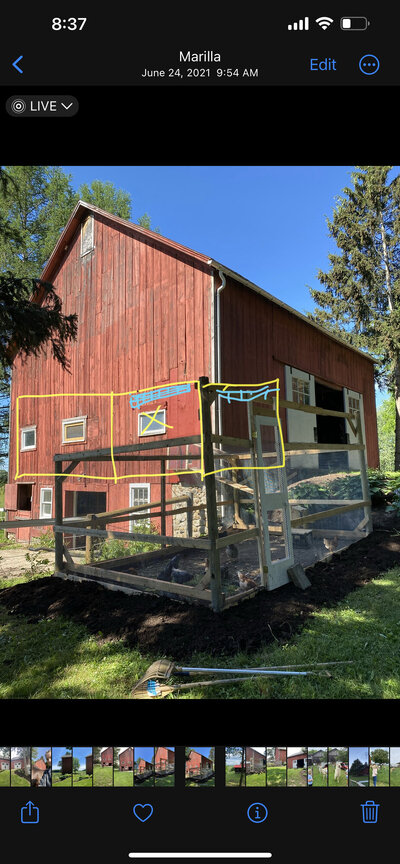Vada the rooster
Chirping
- Sep 17, 2021
- 27
- 40
- 59
Hello all!
Last mid winter, I moved my ladies roosting area into another section of my barn. Mainly to give them another room to get away from one another. I currently have 34 hens that share this barn space. I live in Buffalo New York, and our winters are fairly cold and snowy. (My run was not very winterized so they did not spend much time outside. This year I have expanded my run and I am winterizing it, so they hopefully will go outside daily.)
The room where their roosting bars are located, was an old workshop, it is partially insulated and has a window. The window is located on the non-weather side of my barn, so it does not get direct wind 95% of the time. Last winter I was able to leave that open a crack without making the room too cold and/or drafty. I would like to add some more ventilation to ensure any moisture can escape and hopefully avoid needing the window open for the winter months.
At the moment, the window and a door going into the main part of my barn is the only form of ventilation for this coop. The door is not a perfect seal, so it will allow for air to move through.
My question is, do I cut and add a vent in the exterior wall of my barn and an interior wall to allow for the air to flow? Has anyone ever added an exhaust fan to help move the air out of the space?
Any suggestions are welcomed. I do have plans to make another large perch.
Link to a video of my coop.
TYA!
Last mid winter, I moved my ladies roosting area into another section of my barn. Mainly to give them another room to get away from one another. I currently have 34 hens that share this barn space. I live in Buffalo New York, and our winters are fairly cold and snowy. (My run was not very winterized so they did not spend much time outside. This year I have expanded my run and I am winterizing it, so they hopefully will go outside daily.)
The room where their roosting bars are located, was an old workshop, it is partially insulated and has a window. The window is located on the non-weather side of my barn, so it does not get direct wind 95% of the time. Last winter I was able to leave that open a crack without making the room too cold and/or drafty. I would like to add some more ventilation to ensure any moisture can escape and hopefully avoid needing the window open for the winter months.
At the moment, the window and a door going into the main part of my barn is the only form of ventilation for this coop. The door is not a perfect seal, so it will allow for air to move through.
My question is, do I cut and add a vent in the exterior wall of my barn and an interior wall to allow for the air to flow? Has anyone ever added an exhaust fan to help move the air out of the space?
Any suggestions are welcomed. I do have plans to make another large perch.
Link to a video of my coop.
TYA!





